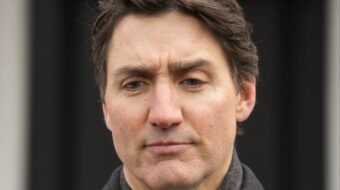
A top economist at the labor-backed Economic Policy Institute said today that this month’s jobless figures and other economic indicators show the “urgent need” for “a second stimulus package as large as or even bigger than” the $700 billion Economic Recovery Act passed in the opening weeks of the Obama administration.
“The current economic crash, now in its 18th month, is by far the longest and worst we have seen since the Great Depression. Any hope we had when we saw May figures that looked a little less horrible than the 600,000 per month job losses we had been seeing have been dashed by what we see now,” Heidi Shierholz, co-author of a devastating economic report EPI issued last month, said in a phone interview.
In June, the official unemployment rate surged to 9.5 percent.
“There is no way that unemployment is not going to pass double-digit figures and we can only hope that it doesn’t pass the benchmark of 10.8 percent, which would be the worst in history since the Great Depression,” she said.
Shierholz said “the housing bubble was the root cause of the recession, aided and abetted by what went on in the financial markets.”
Unions have described the recession, which began in December 2007, as the result of the policies of President George W. Bush and the financial kingpins who pushed for those policies.
Vice President Joe Biden said this week the crisis is even worse than most in the current administration had originally thought.
Shierholz said there are not yet any “real” signs pointing to when the slump will end.
“The economic case for a substantial second stimulus is overwhelming,” she said, “and it’s not because the Recovery Act was ineffective. It is doing what it is supposed to do. All told, it will create or save 3 million jobs. We need to make up now, however, for what has become a deficit of 8 million jobs. No one knew how bad this really was when the first stimulus was passed.”
Shierholz made her remarks during a discussion with the World about the findings in the recent EPI report that she co-authored with Lawrence Mishel, the institute’s director. The report, which came out before the June jobless figures, already characterized the current crash as the worst recession in U.S. history.
“This recession has become the longest and deepest economic downturn since the Great Depression,” Mishel and Shierholz wrote.
“In order to see how this recession stacks up against previous post-war recessions, we compared labor market indicators at the start of recessions to their values 16 months later,” Shierholz said, speaking by phone from her office.
“Unemployment increased much more rapidly during this recession than in other post-war recessions. The unemployment rate increased 4 percentage points in the first 16 months of the current recession, a far steeper increase than any of the previous recessions. In particular, during the first 16 months of the deep recession of 1981-1982, the unemployment rate increased only 3.2 percentage points.”
Another key and particularly alarming feature of the current crash is that the total number of workers gainfully employed has fallen in this recession far more than it did at any time in the past 50 years
.
“Total non-farm employment,” the EPI document says, “decreased much more during this recession, 4.2 percent, than in prior recessions. In particular, during the first 15 months of the recession of 1981-2, employment declined by only 2.9 percent.”
Another issue the EPI report raised was how, during this recession, “real” job loss has outpaced “actual” job loss:
“While the labor market shed 5.7 million jobs since the start of this recession, in those 16 months, the population continued to grow. Just to keep up with growth, the economy must add approximately 127,000 jobs every month. Two million jobs should have been added over this period. In other words, the economy is now almost 8 million jobs below what is needed to maintain pre-recession employment levels.”
Shierholz said “underemployment” is a more comprehensive measure of labor market slack than just the straight jobless numbers.
She emphasized that the recession “really hits hard when we include not just the unemployed, but also ‘involuntary’ part-time workers and marginally attached workers (jobless workers who want a job but are not actively seeking work and are not counted as officially unemployed).”
Because certain types of data were not collected before the mid-1990s, Shierholz said she could not say “definitively” but it is “possible” that “underemployment during the current crash could be worse than at any time in U.S. history.”
The EPI report says, “The number of involuntary part-time workers has nearly doubled since the start of this recession, from 4.6 million to 9 million. The underemployment rate increased from 8.7 percent to 15.8 percent, so that now 24.8 million people, one of every six workers, are either unemployed or underemployed.”
jwojcik @ pww.org











Comments